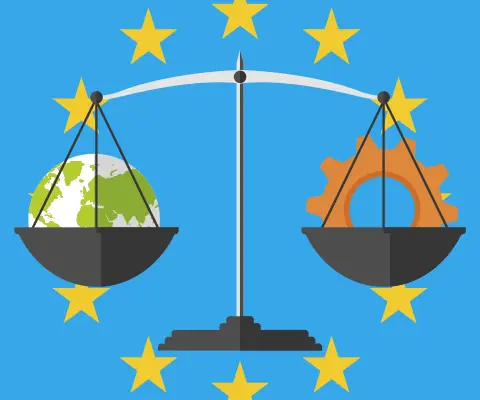
Are you prepared for the EU compliance challenge of EPREL?
Added Friday 15 March 2019
2019 brings yet another major EU compliance challenge for businesses. This time it affects any company selling an energy-labelled device into EU member countries. The IT Insider interviewed Darijo Vuković, Software Product Manager at TIS Grupa, to learn more about ‘EPREL’ and to find out how a TIS and IBM solution can ease the burden of compliance.
The IT Insider: Can you sum up in a few words what EPREL is all about and why it matters to UK businesses?
Darijo Vuković: To summarise the complex regulations, information on any product requiring an energy label must now be entered into a central European database before it can be sold on the EU market. Energy labelling, technical documentation and compliance information will be captured on the European Product Registry for Energy Labelling – EPREL for short.
The IT Insider: What kind of appliances and devices are we talking about here?
Darijo Vuković: It could be anything from an air-conditioning or ventilation unit to a washing-machine – in fact, any product that requires an energy label. The aim is to encourage manufacturers, importers and authorised agents to supply more energy-efficient products by making energy information completely open, transparent and truthful.
The EPREL database will serve two main functions: an open, public part with energy labels and product information sheets will be available from Q2 2019, enabling domestic and business buyers to check out their next new television or tumble-dryer.
Meanwhile, a closed part of the database will be used by the market surveillance authorities in each EU country for the purpose of regulatory audits of the uploaded data.
It’s worth highlighting that member states are empowered to impose their own penalties for non-compliance. They could even demand a product withdrawal, with serious financial (and reputational) consequences for the company concerned.
The IT Insider: With Britain planning to leave the EU, why do companies on this side of the Channel need to worry about EPREL compliance?
Darijo Vuković: Rather like the GDPR, the EPREL framework has a global impact. Whether you're based in Bratislava, Bradford or Brisbane, if you want to get your energy-labelled products on the shelves in EU member countries, there is no get-out clause!
The IT Insider: How pressing is this challenge? What’s the timeline?
Darijo Vuković: Since the 1st January, any new product model must be registered in the database before placement on the EU market. This ruling is retrospective in that it also applies to products placed on the market after 1st August 2017, the date when the Framework Regulation for Energy Labelling was originally issued. Registration is optional for products placed on the market before that date.
The IT Insider: Clearly, the EU’s vision of environmental sustainability is laudable, but it sounds as if it could create an admin nightmare for the companies affected.
Darijo Vuković: You’re not wrong! Manually converting data from the native formats that companies use into EPREL-compliant format and then manually uploading the converted data to the centralised EU database is feasible only if you have a tiny number of products. For more than quite literally one or two products, it becomes a time-consuming and inefficient process.
Bear in mind, too, that information uploaded to the database will need to be updated if, for example, the product specification changes or the manufacturer switches components supplier.
At TIS, we’re currently talking to one appliance supplier who is faced with the prospect of having to upload over 1,200 files to the database in a single month. Before they spoke to us, they’d been considering hiring in a new person solely to handle EPREL compliance, thinking it was their only option.
The IT Insider: So how can TIS help?
Darijo Vuković: We offer a system-to-system solution, based on IBM cloud services. Without delving too deeply into the technicalities, users of the TIS EPREL service upload their data to IBM, where it’s ‘translated’ into the prescribed EPREL XML format.
This data is then sent securely to TIS and we upload zipped two files – energy labels and device specifications – to the EPREL database using the correct specified protocol for data exchange. The service user is notified when the upload is successfully completed.
Our aim throughout is to free enterprises to concentrate on their core activities. By the way, at TIS we have many, many years’ experience of working with banks and other closely regulated financial institutions, so we know all about handling highly sensitive data!
The TIS EPREL cloud-based service is an end-to-end service that combines the skills and knowledge of TIS and IBM to facilitate compliance with EPREL EU regulations.
To find out more, drop an email to: eprel@tis.hr
More Information
If you’d like hear more about this, please complete the form below:
